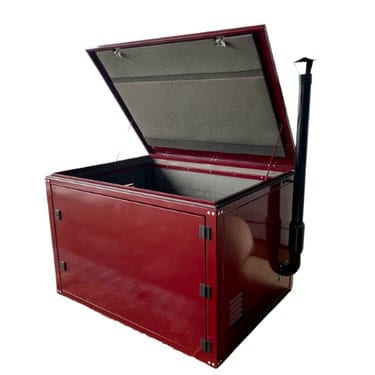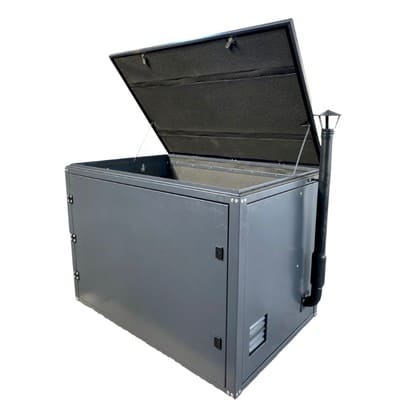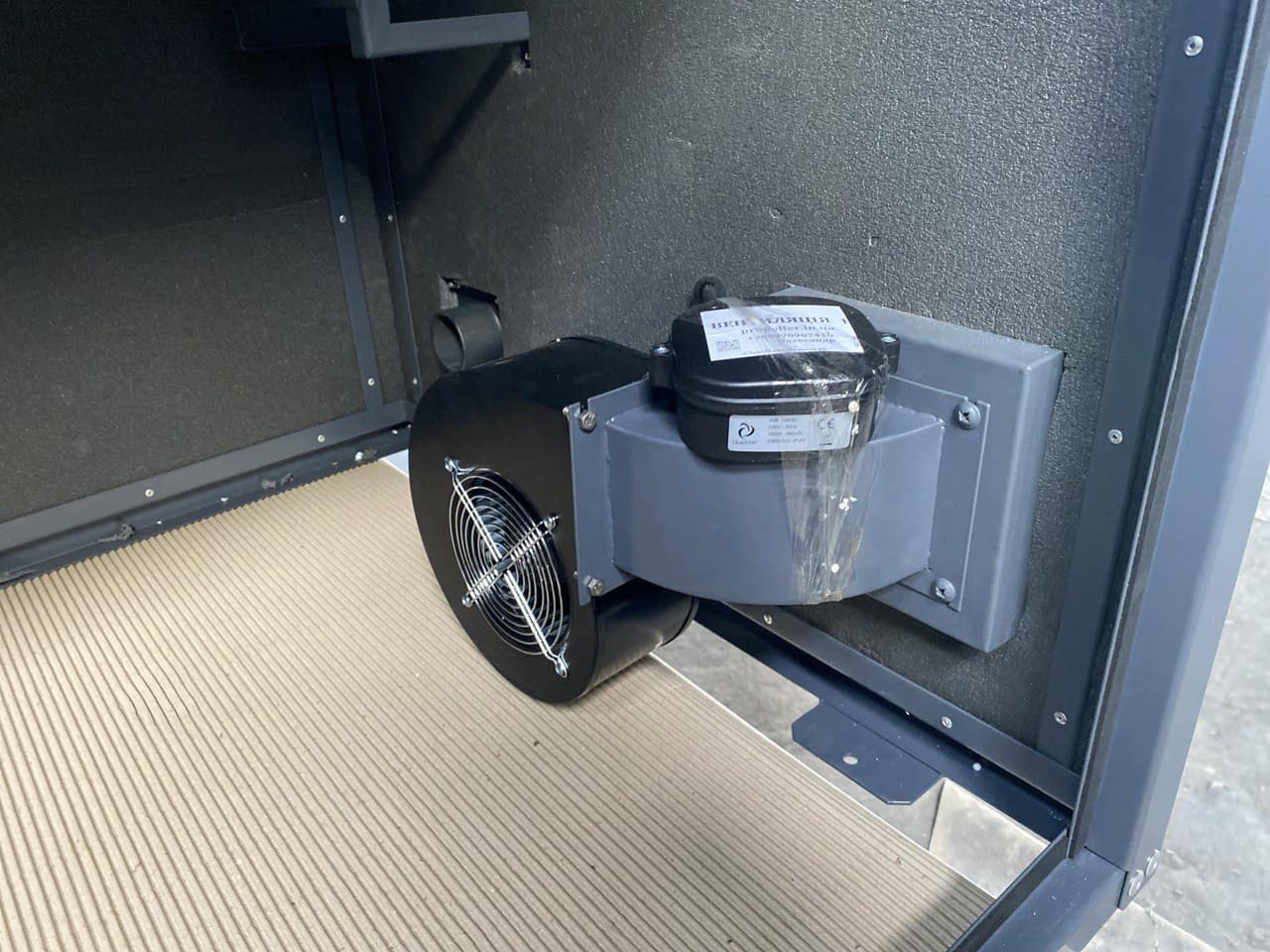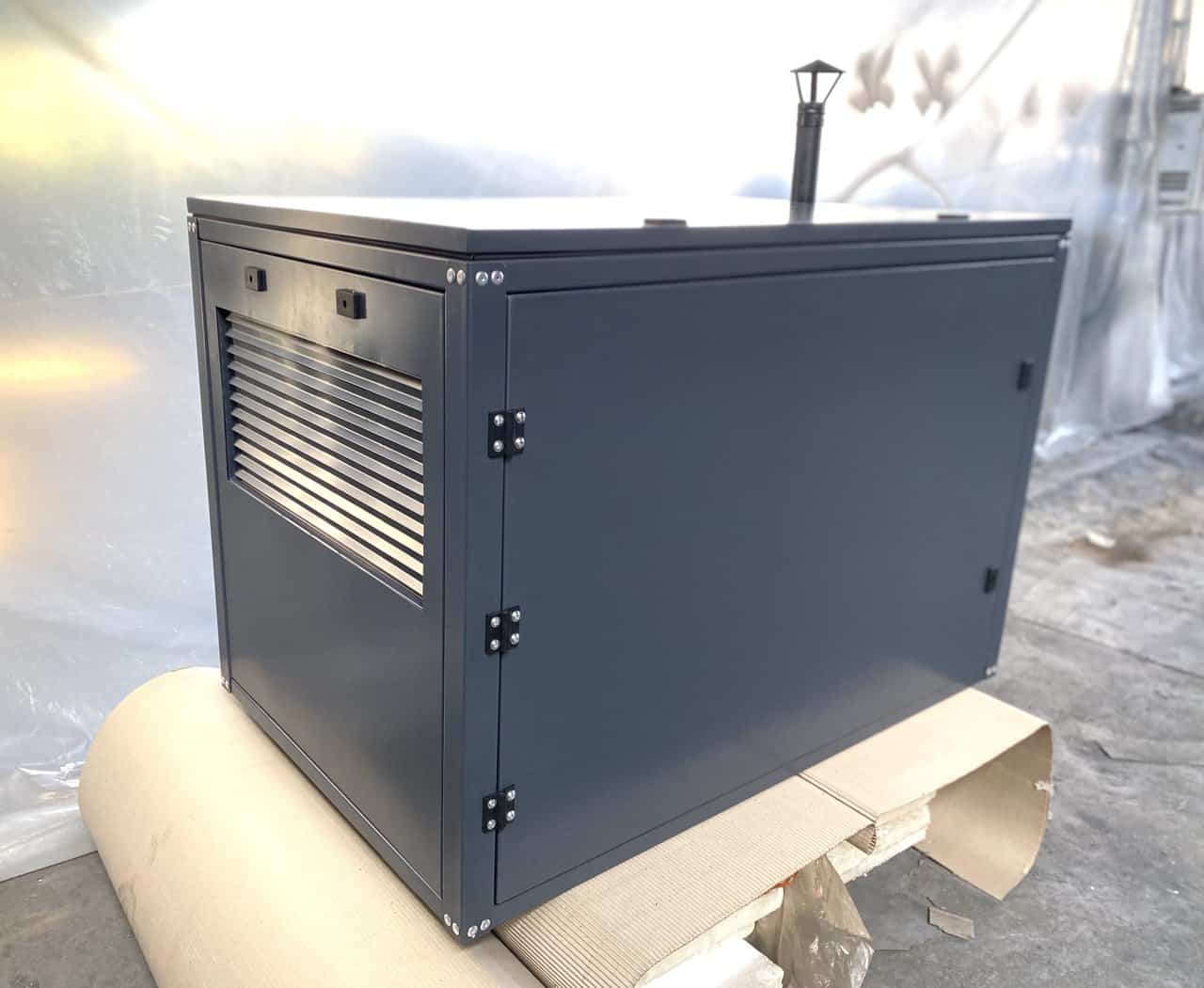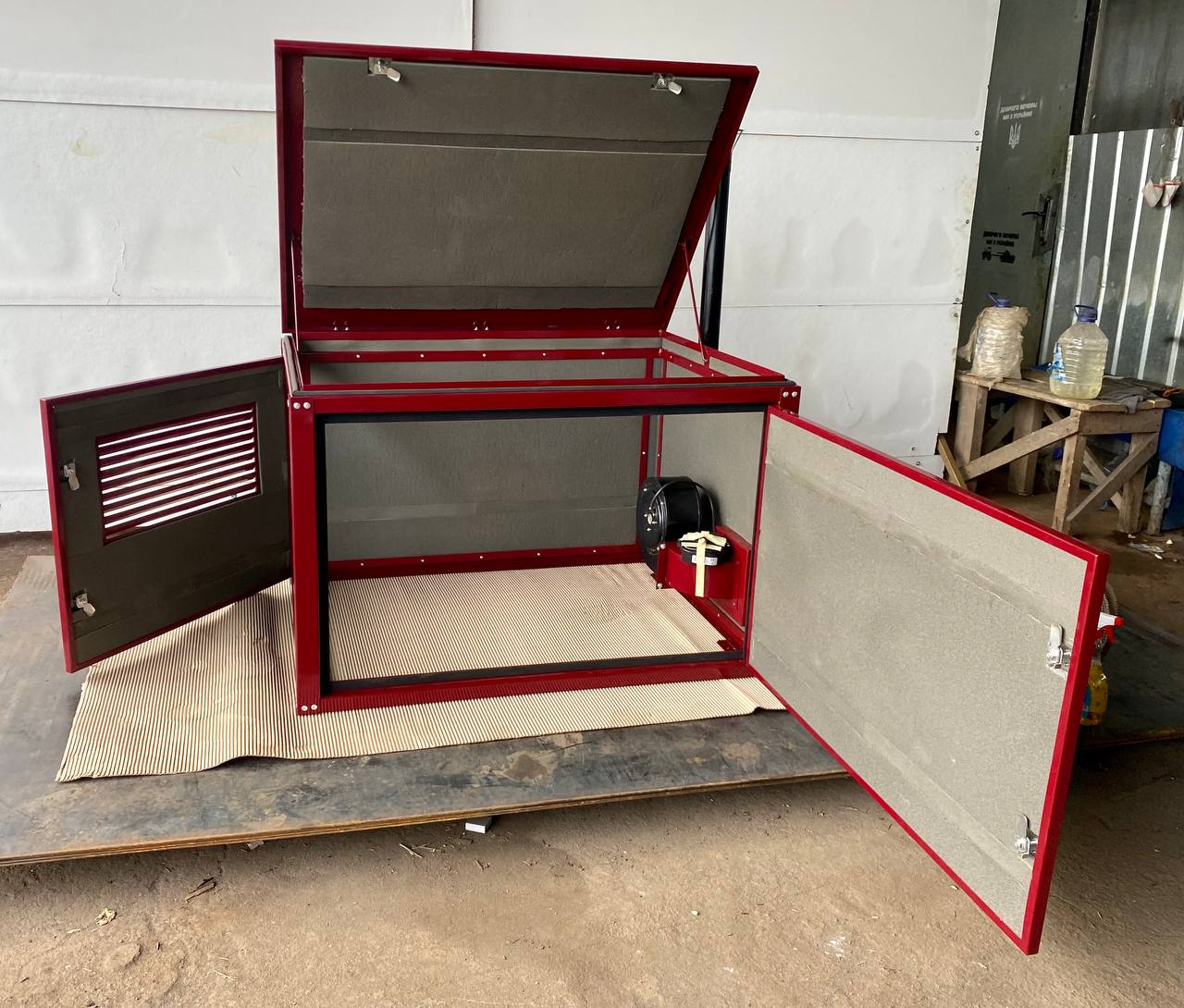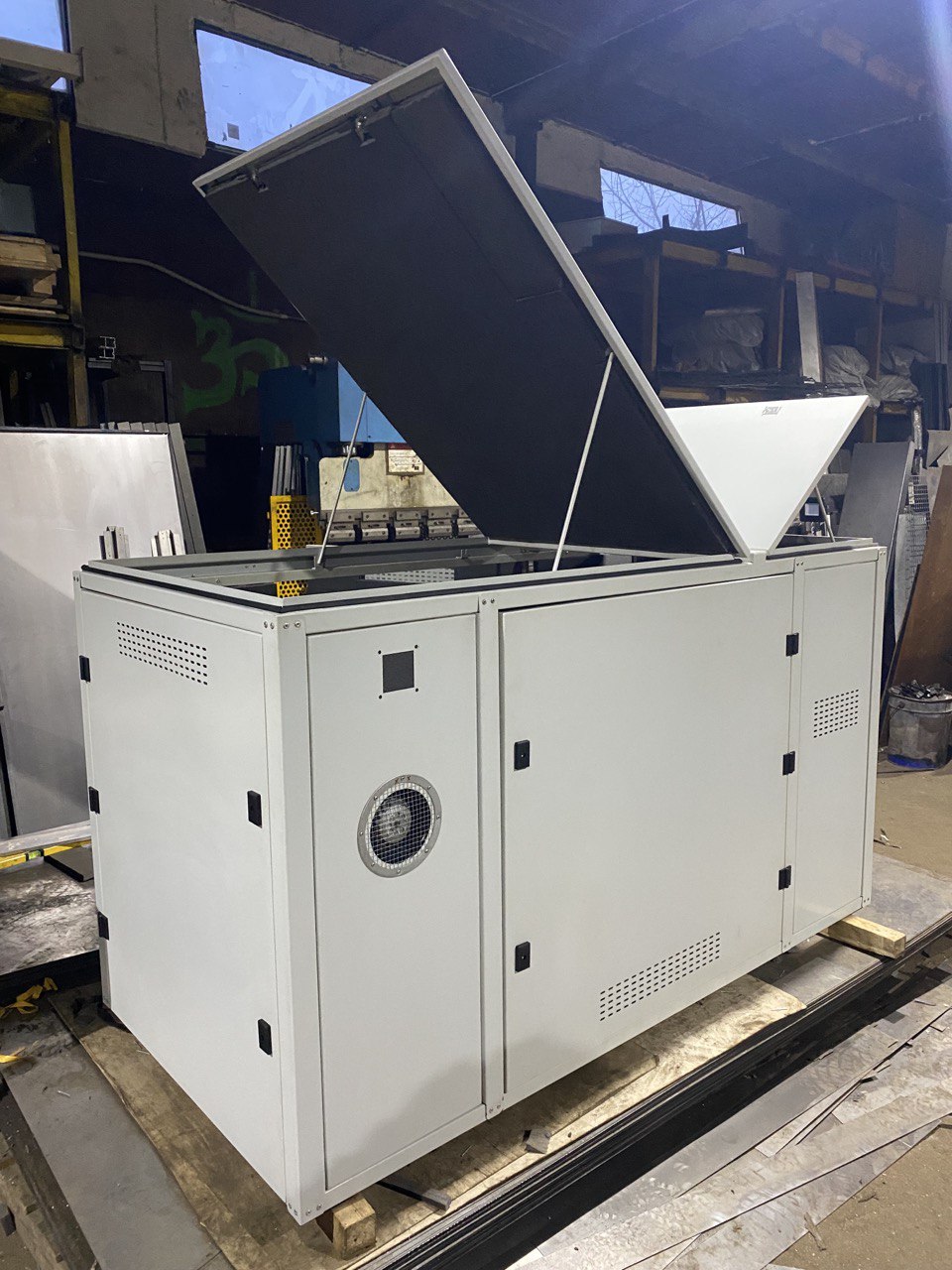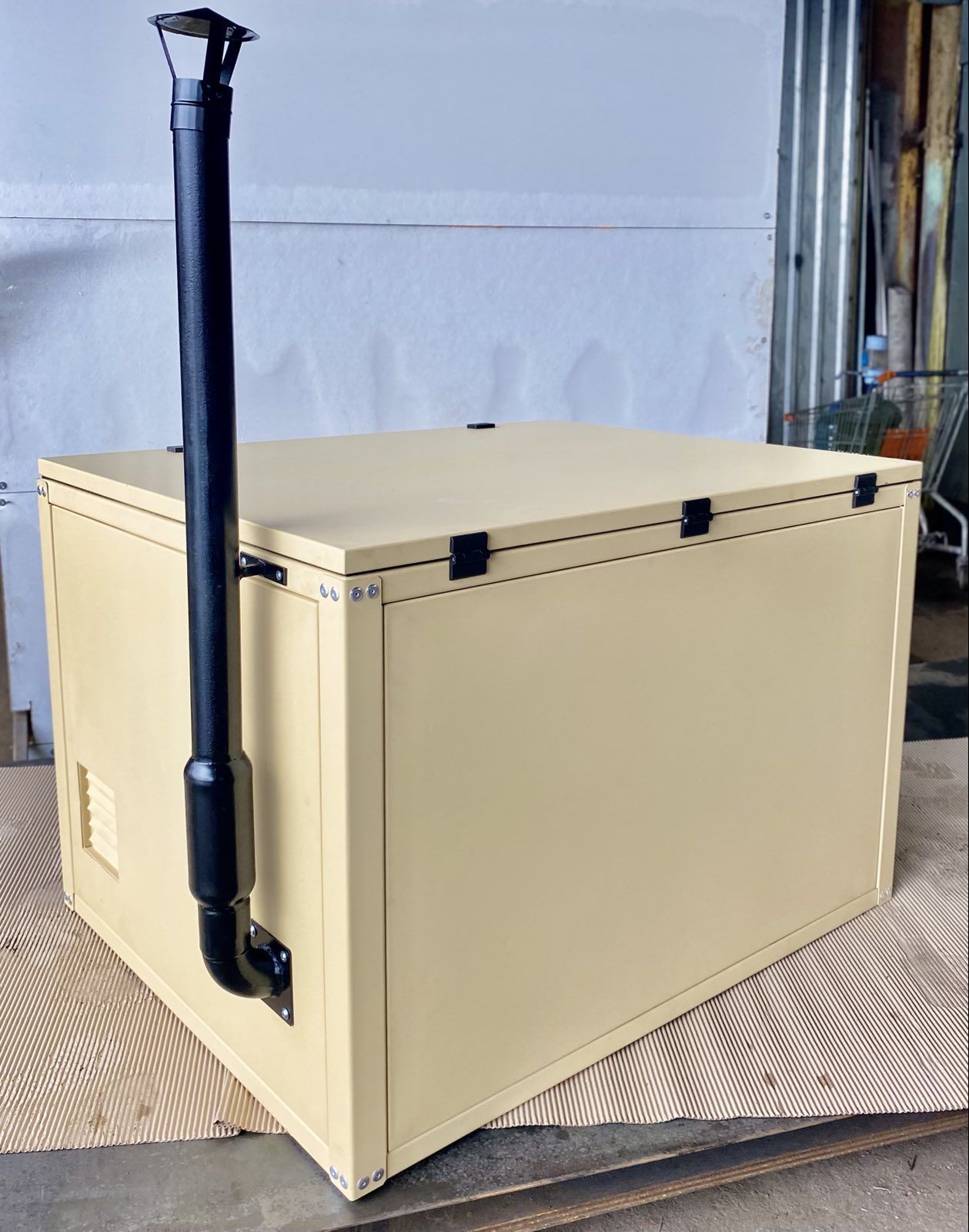How to Choose a casing for the Generator?
The casing for the generator is an insulated, noise-insulating metal structure in which the generator and equipment to improve its operation are installed.
The protective casing for a stationary generator is an important attribute for extending the life of the generator and significantly reducing noise during generator operation.
Electricity generators are widely used as an alternative source of energy. They are easy to operate, have a long service life and high productivity, but there is an important drawback – the strong noise that occurs when the generator is working.
Depending on the type and model of the generator, the noise level can reach 100 dB, which is equal to the noise of a high-speed train, an orchestra. Working next to such a source of noise is extremely difficult and dangerous for health. The permissible noise level during long-term stay is 55 dB, which is 2 times lower than the operation of the generator.
Studies have shown that when working next to a generator with a noise level of 96 dB, after 20 years, more than 34% of personnel have diseases that are related to hearing loss.
Level of comfortable and uncomfortable noise:
30-40 dB is a comfortable level of noise, which can be compared to the rustling of leaves
40 dB – the noise of office equipment and electrical appliances
50 dB is a quiet conversation between two people.
55 dB is the level of painful noise irritation.
90 dB is the noise of city transport
100-110 dB – noise in headphones and volume level at a rock concert.
How to reduce the noise level of the generator?
Two methods of combating noise will be distinguished:
- Global – installation of a generator in a separate room or container;
- Local – installing the generator in the generator housing.
If it is not possible to install the generator in a separate room, then you can install the generator and equipment in a special container. This method is suitable for companies because it is a cost-effective way to protect the generator and equipment. Containers perform several functions, the main ones are:
- Protection of equipment from robbers and vandals,
- protection of equipment from natural influences (rain, snow, sun),
- reducing the noise level of the generator and equipment,
- air conditioning in the container can prevent overheating and hypothermia of the generator and equipment during peak temperature seasons (in the summer from overheating, in the winter – will allow the generator to start).
For the private sector and small companies, a convenient and budget option is to install a generator in a generator casing.
The following can be installed in the protective cover for the generator:
- diesel generator,
- gasoline generator,
- gas generator,
- compressor and others.
Why do you need a cover for a generator?
The hood for the generator or the casing for the generator performs the following main functions:
- Noise insulation.
- Thermal insulation.
- Protects the generator from dust, dirt, rain, snow.
- Protects against vandals and robbers.
- Protection against accidental interference of children and animals with live parts.
- Aesthetic and neat appearance of the equipment.
What does the casing for the generator consist of?
Completeness of the casing for the generator depends on the requirements and needs of the customer, below is a list of the main components of the complete set:
- The metal case, covered with a primer and powder paint, will protect against corrosion (the case is installed outside under a canopy). If the casing will be installed in the open air, it is better to order a primer with zinc, this will increase the period of protection against corrosion.
- Sound-insulating and heat-protective sealant with a thickness of 20 mm or more.
- The top cover on hinges or on gas shock absorbers will provide access to the generator from above.
- Hinged side panels will provide side access to the generator for maintenance and refueling.
- Louver grills for optimal cooling of the engine compartment and cutting off generator noise due to reduced air velocity.
- The air supply fan will provide air supply to the middle of the hood.
- An air exhaust fan will provide air circulation to the outside and cooling of the generator.
- Exhaust pipe upwards to remove smoke when burning fuel. With a fungus on the end, it will protect against rain/snow getting into the middle of the generator.
- The muffler is direct-flow to the exhaust pipe, which is mounted on the exhaust gas system, which is considered one of the main sources of sound.
- Supports for anchors in the floor.
Thanks to the use of a cover for the generator, the noise level can be reduced to an indicator of 40 dB.
The design of the casing is collapsible and, if necessary, it can be folded for ease of transportation. However, in order to avoid difficulties in installation, customers usually choose an assembled structure – ready for installation of the generator.
The company “Altkon” has been manufacturing casings and containers for more than 6 years, and has its own developed design solutions and a design bureau. Depending on the characteristics of the generator, the dimensions and filling of the casing will be selected and adapted to your order.
The best generator cover is a custom-made generator cover. Such a casing will preserve the characteristics of your generator as good as possible and will reduce the defects in its operation.
The country of manufacture is Ukraine.
You can see the main running casings for the generator here.

